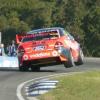-
Content Count
9,904 -
Joined
-
Last visited
-
Days Won
108
Reputation Activity
-
 gerg got a reaction from gregaust in XF Ute Drum to Disc
gerg got a reaction from gregaust in XF Ute Drum to Disc
Confirmed. I did a drum-to-disc conversion recently and thought I might have to remove the residual line pressure valve and found that it had none! The brake drag from takeoff turned out to be a sticky hand brake lever on one caliper.
-
 gerg got a reaction from gregaust in XF Ute Drum to Disc
gerg got a reaction from gregaust in XF Ute Drum to Disc
Confirmed. I did a drum-to-disc conversion recently and thought I might have to remove the residual line pressure valve and found that it had none! The brake drag from takeoff turned out to be a sticky hand brake lever on one caliper.
-
 gerg reacted to ando76 in crossflow porting results
gerg reacted to ando76 in crossflow porting results
I prefer head studs because;
a. when you are going into the engine all the time it just saves money on buying head bolts every time
b. from an engineering stand point studs are more effective at the job and
c. they look bad ass.
I don't like XE dizzy's because in consistent high RPM applications the single bush in top of the dizzy wears and then the inner 'chopper' wheel makes contact with the outside and causes a miss at best and then snaps causing a lost race.
Just thought I'd clarify my reasoning.
My girdle/tray is a combination of both the AU girdle and the BA girdle/tray. I have them on CAD and get them laser cut now after sly's hand made prototype. Four sets of milodon windage tray studs to suit Ford Windsor (4 studs in each pack) and your in business. But knowing you - you will make your own tray girdle - lol.
Once I get these bloody race motors out of the way I'm going to look at what I have to modify to make them suit Cortina as well as there seems to be enough mad x-flows going into Cortina's to justify the re-jig.
+1 on the Roller cam. Kev Wyatt wont build a race motor unless it is Roller cam - that's good enough for me - that and his engine has won our title 5 out of the last 6 years (owner of engine didn't race last year)
-
 gerg reacted to Clevo120Y in crossflow porting results
gerg reacted to Clevo120Y in crossflow porting results
Picked this up today for myself, balanced bottom end, floating pistons, ported head, springs and rollers and a decent cam.
-
 gerg reacted to ando76 in crossflow porting results
gerg reacted to ando76 in crossflow porting results
Agreed 238cfm @ 600 is well and truly possible but you will pay for the port work, seat cut, necked down valve stems, and tapered valve guide bosses required to achieve that figure. You would want to be running a really good inlet manifold with even cylinder fill to achieve max hp, i.e. individual runner style.
A wise man once said 'I've never seen a flow bench win a race' and that is important to remember. Like dyno's they are a tool to measure changes/improvements. As they only suck at a constant pressure they are different from an engine and sometimes engines that shouldn't make power (according to the bench) do because of good low lift figures and well matched cam etc.
Over .600 lift requires a fair bit of mechanical effort and whether the power gains achieved from lifting past that are worth the extra effort and strain is something I'm yet to decide.
I'm sure Sean will be concentrating on improving flow up to your peak cam lift and even if it tapers or holds up to that lift and maintains good low lift figures you will have a weapon on your hands.
Vizards books and articles are a wealth of information - some would say his works are dated but I don't subscribe to that theory as it relates to our applications. I love his stuff on 'no loss' exhaust systems, very cool stuff and how every car is in fact its own dyno. Clever stuff.
-
 gerg reacted to Mr Polson in The tyre clearance v's bump stop thread
gerg reacted to Mr Polson in The tyre clearance v's bump stop thread
I reckon that's the problem!
My Dad has the same issue with his 68 Fairmont, and its due to the castor setting having the wheel too far forward. Only ever does it on passenger side.
-
 gerg got a reaction from Ando81 in Switch for thermos
gerg got a reaction from Ando81 in Switch for thermos
Polson those white connectors wouldn't happen to be scotch-locks at all would they? If so, banish them to hell! They are the root of maybe 90% of all problems on trailer wiring. They are pure evil.
-
 gerg reacted to Clevo120Y in Clevo head flow results
gerg reacted to Clevo120Y in Clevo head flow results
Tested some holley strip dominator manifolds today, they are shit hot I rekon. the long and short runners flow nearly the same as each other and they flow 280cfm on 290cfm head, that's pretty bloody good. One of the manifolds is a normal 4V runner and the direct port injected manifold has the runner floors filled, the filled floor manifold only flowed 5cfm less over 550 thou of lift, I would sacrifice that flow for the added port runner airspeed the filled floor would produce, plus it has NOS hahahahaha.
-
 gerg reacted to Clevo120Y in 4L head flow figures
gerg reacted to Clevo120Y in 4L head flow figures
To my surprise the 96DT tickford head flows about the same as a stock crossflow head and far less than a stock EF head, I will post results later, big shock to me so I redid the test on both heads and my results are accurate, so what makes an XR6 go better? more comp, more cam, more fuel pressure and a better tune in the ECU??? it may be the smaller port promotes better low/mid range torque with increased airspeed.
-
 gerg reacted to Clevo120Y in Clevo head flow results
gerg reacted to Clevo120Y in Clevo head flow results
Starting this thread is a little premature but I'm too excited, I will start to flow test some heads in the next couple of days. A bloke come around today and dropped off some 4V closed chamber ex sprintcar cast heads and some manifolds, I will put up some pics when I get some more batteries for the camera but just for now imagine a holley strip dominator plumbed with direct port nitrous and also a tunnel ram with hidden direct port nitrous in the valley, very cool shit.
-
 gerg got a reaction from Clevo120Y in 4L head flow figures
gerg got a reaction from Clevo120Y in 4L head flow figures
Ok never ported a head myself but looking down the bowl, it seems to be the smallest around the circumference between the short turn and valve guide. Also the throat on the short-turn side looks like it needs a bit of meat off. Being a hemi-style head, it may take a different approach to a wedge style in that the direction you want to bias the flow may be different (ie away from the cylinder wall and into the chamber). I've got a feeling that hemis can be tricky.
Again i'm not an expert and you can tell me to get stuffed. Sometimes you just might need an outsider's eye to see it. Even the missus might be able to help!
-
 gerg got a reaction from Clevo120Y in 4L head flow figures
gerg got a reaction from Clevo120Y in 4L head flow figures
Great posts Clevo, if any test could show a timeline of engine development, it's this. After seeing some figures from a log head, an iron 2V, alloy cross-flow and now these E-series numbers you can see how over 30 years time, the flow figures have doubled. The DOHC figures are even more impressiveb.
I do get the shits sometimes knowing that my 302C is about on par with a modern V6 for performance, (at double the fuel consumption) but then I do take some salvation in the fact that my engine was designed over 40 years ago. And that it sounds tits.
I know you get it all the time, but keep up the good work. I'm always interested in the latest project you've got going.
-
 gerg got a reaction from bear351c in XB Log motor rebuild tips
gerg got a reaction from bear351c in XB Log motor rebuild tips
The yanks never had the highly regarded 2V setup that Ford Aus developed, and in their Inline 6 circles, treat a 2V head like gold, hence the asking price these days. Otherwise, with the stock integral type head, they had to improvise with this very setup you've described. A big improvement but still has some tight turns into the cylinders from the pissy manifold.
I read once (from Kevin Bartlett I believe) that back in the day, people used to mill off the manifold completely from the head, leaving the bare ports open. They would then port out the inlets and then press in some tubes to weld to their own manifold, or weld on some Weber flanges. Even injection was fitted sometimes. These engines were popular in race boats too.
-
 gerg got a reaction from bear351c in XB Log motor rebuild tips
gerg got a reaction from bear351c in XB Log motor rebuild tips
The yanks never had the highly regarded 2V setup that Ford Aus developed, and in their Inline 6 circles, treat a 2V head like gold, hence the asking price these days. Otherwise, with the stock integral type head, they had to improvise with this very setup you've described. A big improvement but still has some tight turns into the cylinders from the pissy manifold.
I read once (from Kevin Bartlett I believe) that back in the day, people used to mill off the manifold completely from the head, leaving the bare ports open. They would then port out the inlets and then press in some tubes to weld to their own manifold, or weld on some Weber flanges. Even injection was fitted sometimes. These engines were popular in race boats too.
-
 gerg got a reaction from bear351c in XB Log motor rebuild tips
gerg got a reaction from bear351c in XB Log motor rebuild tips
The yanks never had the highly regarded 2V setup that Ford Aus developed, and in their Inline 6 circles, treat a 2V head like gold, hence the asking price these days. Otherwise, with the stock integral type head, they had to improvise with this very setup you've described. A big improvement but still has some tight turns into the cylinders from the pissy manifold.
I read once (from Kevin Bartlett I believe) that back in the day, people used to mill off the manifold completely from the head, leaving the bare ports open. They would then port out the inlets and then press in some tubes to weld to their own manifold, or weld on some Weber flanges. Even injection was fitted sometimes. These engines were popular in race boats too.
-
 gerg reacted to ando76 in MSD 6AL-2 Programmable: Anyone Running Them?
gerg reacted to ando76 in MSD 6AL-2 Programmable: Anyone Running Them?
Gerg - good to hear that you have had success. they truly are an awesome piece of kit. Interesting on the rotor phasing thing, but no real surprise as they do say to check it in the instructions from memory.
Happy motoring for you now and stunned looks to come when the 'griswald' is hooked up to the laptop.....
-
 gerg got a reaction from slydog in MSD 6AL-2 Programmable: Anyone Running Them?
gerg got a reaction from slydog in MSD 6AL-2 Programmable: Anyone Running Them?
Ok final update: MAP sensor is in and MSD dizzy is finally setup and working.
All I can say is..... wow!
It wasn't an easy run to install it (I'll go into that later) but the difference is simply amazing. Easy Cold starts, sweet part-throttle response and no detonation are what somebody running a mechanical dizzy could only dream of, especially if running E10.
Some important points:
• It's not well documented in the instructions, but rotor phasing is the biggest hurdle to overcome when running programmable ignition. Phasing is the relationship between the ignition trigger and where the rotor is in relation to the dizzy cap terminal at the time of spark occurring. Get this wrong and you'll be in a world of poo, and you'll definitely not get away with running a standard dizzy if you want to use the full range of 30 deg available from the MSD box. To check rotor phasing, you need to sacrifice a distributor cap by drilling a large hole next to #1 terminal and shine a timing light down into it to see where the rotor sits when the spark happens. It also shows how far the spark has to jump if it is out.
• I had to modify my billet dizzy by pushing off the trigger wheel from the splined shaft and advancing it a couple of teeth to the point where the triggering happened just as the rotor approaches the cap terminal, that way as the computer retards the spark from that point on, the rotor still has lots of travel left to transfer the spark and not have to jump too far.
• I also had to modify the rotor tip by soldering an extension to the trailing edge of it, to allow a greater range of operation. The length is critical, for if you go too long, the spark will jump instead to the previous cylinder and the engine will misfire and run like a hairy goat.
• MSD wiring is not intuitive at all. The colour traces on the black dizzy wires are orange + and purple -, yet the MSD box has purple and green. Now you'd think the colours would sort of match with purple going to purple but you're wrong! It goes dizzy orange trace to purple + and purple trace to green - .... Stupid! Get this wrong and it won't run very well, if at all. Ask me how I know.
• I can say that my fuel economy will improve no doubt. After putting annular boosters in my 600 Holley, I dropped my jets from 63 to 61, and it ran well. Now with the MSD fully functional, I'm trying 59s and it still goes really well, if a bit on the lean side. It does have a little bit of surge at cruise speeds just as the mains are coming on. Jet changes take 10 minutes so it's no drama to go back.
Overall, i'd highly recommend this MSD box to anyone who runs a carby-equipped car. It won't give you EFI-like performance but is the closest thing to it and blows away any mechanical distributor out there.
-
 gerg got a reaction from Clevo120Y in Modified inlet manifold
gerg got a reaction from Clevo120Y in Modified inlet manifold
Wow the stocks manifolds really are rubbish!
-
 gerg got a reaction from slydog in crossflow porting results
gerg got a reaction from slydog in crossflow porting results
With the cross-flow being a very similar design to the Clevo in the ports (except entry chape), could a 2V benefit from a blend and short-turn tidy up? Would it be worthwhile? Anyone got flow figures for both stock and tidied-up 2V heads?
I've wondered about biasing the porting to one side of the port to promote swirl - now i have to wonder no more. This is a great thread... Keep it up!
-
 gerg got a reaction from slydog in crossflow porting results
gerg got a reaction from slydog in crossflow porting results
With the cross-flow being a very similar design to the Clevo in the ports (except entry chape), could a 2V benefit from a blend and short-turn tidy up? Would it be worthwhile? Anyone got flow figures for both stock and tidied-up 2V heads?
I've wondered about biasing the porting to one side of the port to promote swirl - now i have to wonder no more. This is a great thread... Keep it up!
-
 gerg reacted to ando76 in MSD 6AL-2 Programmable: Anyone Running Them?
gerg reacted to ando76 in MSD 6AL-2 Programmable: Anyone Running Them?
Another one converted to the virtues of a programmable ignition which provides good spark. Wait till you get a curve into it and then you will discover the true power of that little box.
Why anyone would play with dizzy weights anymore is beyond me and the same could be said of locked timing IMHO, but each to their own I suppose. My old man always said "there is more than one way to skin at cat" but I like to add to that by saying "Yeah but I prefer to do it with the sharpest knife."
Keep us informed of your progress please.
-
 gerg reacted to slydog in MSD 6AL-2 Programmable: Anyone Running Them?
gerg reacted to slydog in MSD 6AL-2 Programmable: Anyone Running Them?
Good work Gerg...mate converted his to a halls effect style unit with a pick-up or kit off somthing else.I'll find out and send you the details if you like.I prefer the the big fat DC pick up over the mag pick up of a electronic for even better performance from the ignition system.
-
 gerg reacted to Thom in MSD 6AL-2 Programmable: Anyone Running Them?
gerg reacted to Thom in MSD 6AL-2 Programmable: Anyone Running Them?
Fuck yeah buddy, nothing like opening a box that contains a box of power inside
-
 gerg got a reaction from Stevemack in Building a Clevo
gerg got a reaction from Stevemack in Building a Clevo
Rule of thumb with determining wear on anything that's meant to be precision-machined: if your fingernail can grab on a score mark, it's rooted.
Just looking at the pics, it doesn't look good. Sleeving may be the only option on this block. 0.040" is too far already in my opinion, and generally 0.030" is the limit most people stick to on Clevos.
Not sure about cost these days but 10 years ago it was around $100 a pot to sleeve an engine.
-
 gerg got a reaction from PhatZJ in Bosch (copy) reluctor dizzy: regraphing?
gerg got a reaction from PhatZJ in Bosch (copy) reluctor dizzy: regraphing?
I've inherited this P--C--- dizzy with the motor, and already a couple of things have gone wrong. One of them was The vac advance can, which blew a diaphragm... No big deal, the points one slipped right in its place (thanks Mr Bosch).
Now, if I advance it up to cruise nice (with vac advance connected to manifold, not ported) it rattles it's head off under load at around 2500-4000 (where the meat of torque is made). But then when I retard base timing back to stop it pinging, it's doughy and unresponsive down low and cruises crap. It feels like it's getting way too much mechanical advance. This is on E10 by the way. Premium doesn't seem to bother it.
I've read on one other forum that these dizzys are set up with weak springs and give too much total timing.
Is there a way of limiting the total advance without having to take the dizzy somewhere and pay for a recurve? If I have to do that, that's already halfway to buying an MSD 6A programmable, which is what you really want anyway.









